
Where are our clients now?

Where are our clients now?
Click the button to hear an audio version of the panel.
Creating a world of possibility
Manuel’s story: a hands-on life
In 1923, Manuel Price came to us as a client. Even as a youngster, there was something especially welcoming about Manuel that immediately warmed everyone. He became a big brother to the other children living at our home. Manuel could do anything with his hands: repair watches, radios, leather work and wood sculpting. At age 18, he joined our staff as the workshop instructor — teaching the other children his skills with tools. In the 1940s, he married Lenore Tofflemire, an occupational therapist on staff. Together, the lovebirds moved into a small house, which was converted for wheelchair use by mutual friends. One of Manuel’s friends helped him by converting a car to hand control, meaning Manuel could drive on his own.
Manuel’s story represents a significant shift in attitudes towards disability at our hospital: one that prioritized autonomy and an independent life. As the decades rolled on, the hospital began to move away from being just a long-term care facility, to imagining what possibilities existed for clients and the lives they could live beyond our walls.
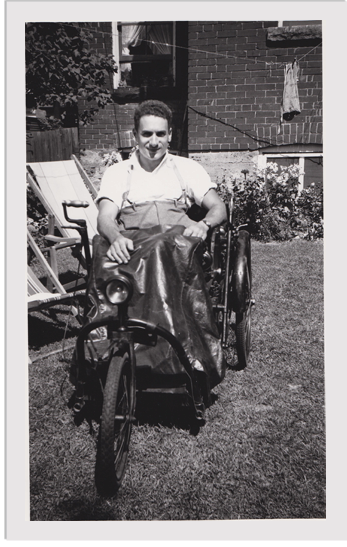
Manuel Price on his motorcycle, 1940s.
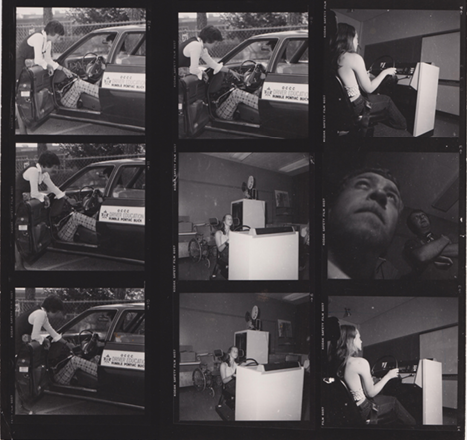
Driving program, 1976.
In 1956, the Habilitation Program was established. This program promoted independent living skills and resources to help youth prepare for adult life outside of an institution. In 1976, a driving program was introduced and in 1983, the Transitional Care Program emerged helping families learn care techniques and to organize services and support so their children could live at home.
Many of these programs still exist in their own forms today. The Habilitation Program has evolved into The Independence Program, a three-week session where young adults with physical or cognitive disabilities live at a university or college residence and work on goals related to learning how to live away from home. Meanwhile, the 1983 Transitional Care Program has expanded into a plethora of community services.
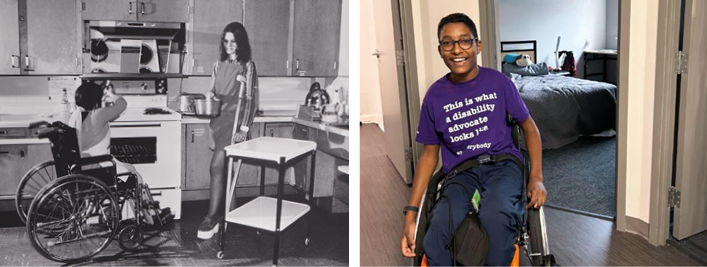
Left: The Independence Program, 1979. Right: The Independence Program, now.
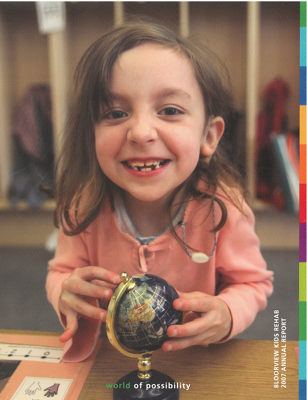
Cover of Holland Bloorview
annual report, 2007.
Did you know…
In our 2007 annual report we wrote “Our vision is to create a world of possibility for kids with disability”. Today, “creating a world of possibility” is our tagline and highlights our ongoing commitment to providing children and youth with the tools they need to follow their dreams.
Julian, age 23
Julian spends his days checking out cuisines at restaurants, going to movies, and volunteering, including at Holland Bloorview’s Spiral Garden. To follow his passions, Julian relies on two support workers. While funding for his support workers remains a challenge – his family pays for 60 hours and the government only covers nine of those hours – he reflects on the benefits of living an independent life: “On one hand I have my independence, so I can pick and choose what I’d like to do. On the other hand, I still live at home, so my life in some ways is still the same.”
When Julian isn’t volunteering at the Toronto International Film Festival or taking a course to continue his learning, he enjoys spending time with his family and friends. Julian shares this piece of advice for younger kids: “I feel like I’m a good role model for younger people who have a similar condition […] no matter how hard things might be at school or in the community – they may feel that they don’t fit in – things do get better.”
Read Julian’s story here.
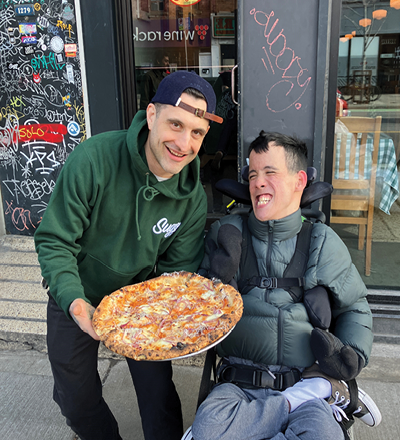
Julian out for pizza, 2024
Steve Kean, age 56
When Steve went to The Independence Program (TIP) as a teen in the 1980s, it was housed in a hospital ward on what was then called The Ontario Crippled Children’s Centre (OCCC). “Up until TIP, I had never done a load of laundry in my life because the laundry room in my home was not wheelchair accessible,” Steve recalls. Since then, TIP has partnered with local colleges
and universities so participants can experience living in residence
and learning how to navigate the city and the TTC.
Steve longed to be an artist, but he failed high school art class because “I couldn’t make my hands do what the teacher wanted me to do.” A camera was his way into the art world. He is now semi-retired as a fine art photographer shooting the natural world and selling his work at art festivals.
Read Steve’s story here.
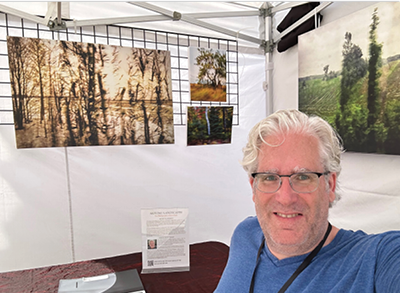
Steve showing his photographs, 2018
Rosina Isabella, age 61
Rosina went to school at The Ontario Crippled Children’s Centre. “The highlight for me was I got to ride a special green and gold bike. It had chest support for me to lean on […] I would do races with the boys.”
In 1977, 14-year-old Rosina went to live at our hospital. Her mother was a single parent and couldn’t lift her anymore. “At first I was really upset, but then there were a couple of nurses that really got me on my way to independence. They were instrumental in showing me I could do stuff. We went clothes shopping […] Fairview Mall was our hangout.”
Rosina currently lives in supported housing. She has personal support workers who are hired by an agency, and while she values their assistance, she feels she has to give up a level of control and privacy that nondisabled people take for granted. She is now a student in the disability studies program at Toronto Metropolitan University and an advocate for disability issues.
Read Rosina’s story here.

Rosina and her cat, 2021
Do you recognize these Holland Bloorview alumni?

Marissa Papaconstantinou, paralympian
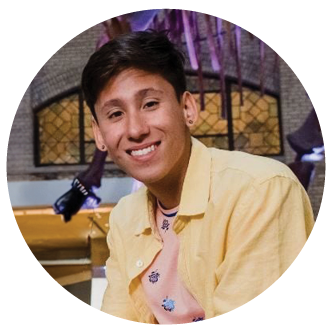
Tai Young,
actor, athlete and advocate
actor, athlete and advocate

Taylor Lindsay-Noel, advocate and entrepreneur – owner, Cup of Té
Are you a former client? Let us know what you’re up to. We’d like to stay connected here.
